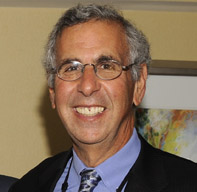Republican leaders like Speaker Boehner have suggested that increasing tax rates on the wealthiest one percent of Americans would be a mistake, alleging that the top one percent are the preeminent job creators and entrepreneurs in our economy. In fact, it turns out that the top one percent create only about one percent of businesses and that the lion’s share of new businesses are started by the remaining 99%, including middle- and low-income Americans, trying to create jobs for themselves.
What’s more, the primary source of investment in the 2-2½ million new businesses started each year (which are responsible for almost all net new jobs created each year) is personal savings and the savings of friends, family and associates – not the resources of the wealthiest one percent. There may be other reasons not to increase tax rates on the top one percent, but impact on job and business creation and investment are not among them. Let us look instead to the opportunities open to all our people, especially those who may have entrepreneurial capability and interest, but not the ability to invest in themselves and their families.
When one examines the best available data, it becomes clear that the wealthiest one percent are not particularly more likely to be active entrepreneurs deriving a substantial portion of their income from their ventures than the other 99 percentiles. In fact, according to the Office of Tax Analysis of the Treasury Department, millionaires make up only .5% to 1.4% of small business owners. Ninety-nine percent of small – and new – businesses are founded by the rest of us; we represent all income brackets, races and education levels and we come from all over the country.
New jobs, in fact, do not come primarily from small or large businesses, but instead, from new businesses under one year old. According to the Kauffman Foundation, over the last thirty years, it is these youngest firms that have created all net new jobs, adding an average of three million per year.
Over the last thirty years, the job contribution of new and young businesses has varied from highs of 3.6 million to lows of 2.2 million. For the last couple years, we have been at one of those lows in new business job creation, at a time when we can least afford it. No wonder the nation is asking how to create jobs and only beginning to look in the right direction for how to stimulate the formation and growth of new and young business.
When one looks at the nature of new business job creation, the first finding is that most startups are small indeed, often employing only the entrepreneur herself/himself in the first few years. Some two million Americans create jobs for themselves each year, many part-time. Some of these businesses are pioneering new edges of the economy (green burials for the aging, soon-to-be-dying baby boomers; indigenous beans; new digital domains and new services) while others offer more prosaic goods and services. In both cases, entrepreneurship is often driven by necessity. Nevertheless, it remains the difference between some income and employment and unemployment and poverty.
Twenty to thirty percent of the self-employed add employees, sooner or later. Three percent or so of business starts grow to some size, creating tens or hundreds or thousands of jobs, and in some cases, they build whole new industries. It is on these high-growth firms that the Kauffman Foundation, the President’s Start-Up Initiative and many business leaders are now focused. Indeed, the cultivation of seed and venture capital firms, incubators, expanded H-1 Visas and lower tax rates for new businesses are all worth pursuing.
But what of the other 97%? Should we ignore them? More to the point, if you had met Steve Jobs when he was a college drop-out from a blue-collar home with an interest in calligraphy and acid, would you have recognized him as the stand-out entrepreneur of our generation? Unlikely. So, if we really want to increase the yield of our economic garden, perhaps we should water all the plants.
How do we do that? For starters, the un- or underemployed American considering whether to start a business and create a job for herself should be encouraged through tax deferrals that could temporarily reduce business costs (for example, not having to pay both employer and employee shares of FICA). Likewise, would-be entrepreneurs should have greater access to the personal savings and savings of families, friends and associates from whence the overwhelming majority of all investment in new business starts comes. To facilitate this, we should make the existing Saver’s Credit refundable and available for new business creation as well as homeownership, college and retirement. We should also think critically about a two percent reduction in the Self-Employment Payroll Tax, which looks like it may be the beginning of a true Self-Employment Tax Credit. Finally, we should remove the penalties poor and unemployed families depending on some form of public assistance face when trying to create their own jobs. This includes asset limits in welfare, Social Security, Food Stamps, health insurance and more.
In short, it’s new and young, not small or large. It’s savings and equity, not debt. It’s tomorrow’s economy, not yesterday’s. It’s powered by all of us, not just the top 1%. And, perhaps most importantly, it’s with tax incentives for saving and entrepreneurship for all, not just for our wealthiest neighbors.
[reprinted from March 2012 CFED newsletter]
More To Read
May 19, 2025
A year of reflections, a path forward
Read EOI Executive Director's 2025 Changemaker Dinner speech
March 24, 2025
Remembering former Washington State House Speaker Frank Chopp
Rep. Chopp was Washington state’s longest-serving Speaker of the House
February 11, 2025
The rising cost of health care is unsustainable and out of control
We have solutions that put people over profits

